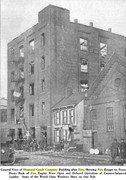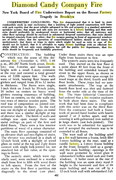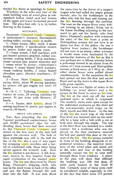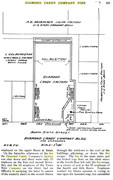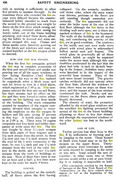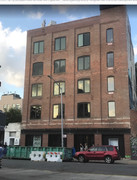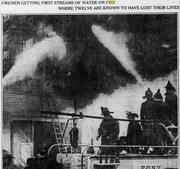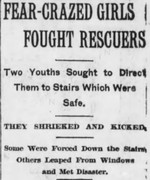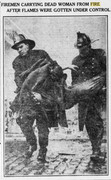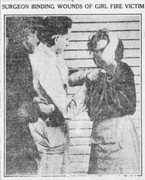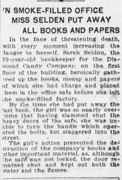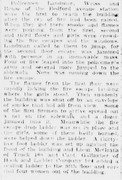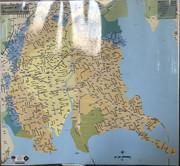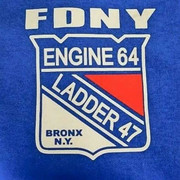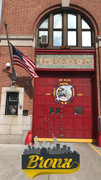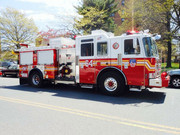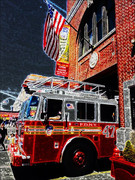You are using an out of date browser. It may not display this or other websites correctly.
You should upgrade or use an alternative browser.
You should upgrade or use an alternative browser.
FDNY and NYC Firehouses and Fire Companies - 2nd Section
- Thread starter mack
- Start date
FIRE ENGINEERING
New York's Super Pumper System 10/01/1965
By JOHN LEHOCZKY, JR.


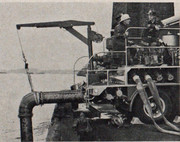
New York's Super Pumper System - Giant pumper, super tender and three satellite tenders can deliver 8800 gallons per minute at scene of fire
THE SUPER PUMPER SYSTEM, recently accepted by the New York Fire Department, is the world s most powerful land-based fire fighting unit. This $875,000 complex of equipment was designed and developed by Mack Trucks, Inc., from a conception by William Francis Gibbs, president of Gibbs & Cox, Naval Architects and Marine Engineers. The system consists of five pieces of apparatus, including the Super Pumper, Super Hose Tender and three Satellite Tenders.One of the recurring difficulties encountered by firemen in combating major holocausts is the inability of present-day pumpers to deliver water quantity and pressure adequate enough to penetrate the heart of the fire and extinguish it. At a major fire, many pumpers arrive at the scene and draw water from hydrants attached usually to the same water main. The evacuation of water to fight the fire from a common water source drastically reduces the water pressure available to the pumpers.
When such a heavy drain on the water supply occurs, firemen frequently find that insufficient water is available in the proximity of the fire to fight it from a safe distance. At very hot fires, these ineffective water streams vaporize before touching the flames.
When attempting to fight fires at places remote from fire hydrants, it frequently is difficult to lay enough hose or to bring enough fire companies to the scene of the fire to effectively control it.
The Super Pumper can be as far as 10 city blocks from the fire and draw its water from a primary source such as a harbor, lake, river, or from four or eight hydrants depending on whether high volume, or high pressure is needed.
Series or parallel
With the utilization of the Super Pumper in conjunction with the Super Tender, it will be possible to deliver 8800 gallons of water per minute at a pressure of 350 psig at the pump discharge when in parallel arrangement, or 4400 gpm at 700 psig when in series operation. This pressure is nearly five times greater than that of the regular pumpers and delivers four times as much volume. Thus, the water horsepower is equivalent to that of 20 regular pumpers. The high-volume and pressure characteristics of the Super Pumper with the tremendous water velocity of the 7-inch nozzle of the water monitor on the Super Tender will open up a new approach to fire fighting.
The Super Pumper and Super Tender are designed for combating major conflagrations and for modem skyscraper fire fighting. This equipment could also serve in times of disaster such as floods and hurricanes as emergency water pumping stations.
There are at least 40 cities in the United States with skyscrapers and most of these communities are located near lakes, rivers or oceans.
Good mobility
The Super Pumper, which is a mobile pumping station, consists of a tractor and a semi-trailer unit, coupled. It is smaller than most highwaytype tractor-trailer units and provides excellent mobility in negotiating the streets of New York. The tractor unit is a standard Mack F715ST model ?groomed? for fire apparatus use. The tractor engine is the Mack END864 naturally aspirated, 4-stroke diesel engine developing 255 bhp at 2300 rpm. This engine is coupled to an Allison CLT 4460 semi-automatic transmission. A power take-off unit attached to the transmission drives a hydraulic pump which, via hydraulic motors, drives the air compressor, which provides starting air for the main pump engine and the priming pump.
The semi-trailer unit carries the Napier-Deltic engine rated 2400 bph at 1800 rpm. This is an 18-cylinder, 2-stroke, turbo-blown diesel engine weighing only 13,000 pounds. Directly coupled to this engine is a 6-stage DeLaval centrifugal pump. This pump was specially designed for the Super Pumper application. The pump weighs 14,000 pounds and is made of 18-8 stainless steel to permit operation with any type of water. This pump will deliver 8800 gallons of water per minute at 350 psig when in parallel operation, or 4400 gpm at 700 psig in series operation. The pump has eight 4 1/2-inch suction connections for use when receiving water from hydrants and two 12-inch-diameter inlets when drafting water from a primary water source such as a lake, river, or other open water way. There are eight 4 1/2-inch high-pressure discharge valves on the pump.
The davit at the rear of the pump is used to support the two 12-inch-diameter reinforced fiberglass pipes and suitable elbows when coupled to the suctions inlet when drafting water.
The Super Tender consists of a Mack tractor unit similar to that of the Super Pumper on which is mounted the 10,000-gpm water cannon. Hydraulically operated outriggers are attached to the chassis frame to resist the thrust action from the water cannon. Mounted on the rear platform (fifth wheel) of the tractor unit is a semi-trailer divided into two sections. The forward half is compartmented to carry auxiliary fire fighting equipment. The rear half carries 2000 feet of 4 1/2-inch hose in a conventional flatbed body arrangement. Under the hose compartment, four 4 1/2-inch water manifolds direct water through check valves and air-operated pressure-reducing valves to Siamese connections at the sides of the semi-trailer to enable conventional low-pressure (100 psi) hoses to be used. Eight 2 1/2-inch hose lines can be fed from the semi-trailer, four from each side. The semi-trailer may be disconnected from the tractor unit enabling these two independent units to fight the fire from different vantage points. Maneuverability of the Super Tender is enhanced with the rear wheels being hydraulically steerable from a tillerman position at the center rear of the semitrailer.
The three satellite tenders are standard Mack ?C? model fire apparatus units with specially designed bodies capable of carrying 2000 feet of 4⅛ineh hose. On each vehicle is mounted a 4000-gpm water cannon.
Mile and a half of hose
As envisioned, the Super Pumper and Super Hose Tender with its three satellite tenders would be strategically located in the city. In answer to a major alarm, headquarters would determine what combination of vehicles will accompany the Super Pumper to the fire. In some instances, all five units might be called; in other cases, only the Super Pumper and the Super Hose Tender may be needed. The system also provides great flexibility in respect to utilizing water sources and mustering the fire power of the system?s water cannons.
With its mile and a half of hose, the Super Pumper System may draw water from as far as 10 city blocks away from a fire. The pumper can be connected to as many as eight water hydrants at one time, or water can be drawn from a primary source, such as a harbor. Likewise, firemen can simultaneously throw water from the three cannons on the satellite vehicles and from the giant cannon on the Super Hose Tender, or they can utilize any combination of the four.
https://www.youtube.com/watch?v=MX0lmX6cttI
https://www.firechief.com/2016/01/08/the-greatest-fire-pumper-the-world-has-known/
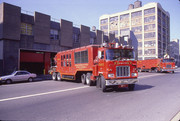
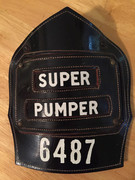
New York's Super Pumper System 10/01/1965
By JOHN LEHOCZKY, JR.



New York's Super Pumper System - Giant pumper, super tender and three satellite tenders can deliver 8800 gallons per minute at scene of fire
THE SUPER PUMPER SYSTEM, recently accepted by the New York Fire Department, is the world s most powerful land-based fire fighting unit. This $875,000 complex of equipment was designed and developed by Mack Trucks, Inc., from a conception by William Francis Gibbs, president of Gibbs & Cox, Naval Architects and Marine Engineers. The system consists of five pieces of apparatus, including the Super Pumper, Super Hose Tender and three Satellite Tenders.One of the recurring difficulties encountered by firemen in combating major holocausts is the inability of present-day pumpers to deliver water quantity and pressure adequate enough to penetrate the heart of the fire and extinguish it. At a major fire, many pumpers arrive at the scene and draw water from hydrants attached usually to the same water main. The evacuation of water to fight the fire from a common water source drastically reduces the water pressure available to the pumpers.
When such a heavy drain on the water supply occurs, firemen frequently find that insufficient water is available in the proximity of the fire to fight it from a safe distance. At very hot fires, these ineffective water streams vaporize before touching the flames.
When attempting to fight fires at places remote from fire hydrants, it frequently is difficult to lay enough hose or to bring enough fire companies to the scene of the fire to effectively control it.
The Super Pumper can be as far as 10 city blocks from the fire and draw its water from a primary source such as a harbor, lake, river, or from four or eight hydrants depending on whether high volume, or high pressure is needed.
Series or parallel
With the utilization of the Super Pumper in conjunction with the Super Tender, it will be possible to deliver 8800 gallons of water per minute at a pressure of 350 psig at the pump discharge when in parallel arrangement, or 4400 gpm at 700 psig when in series operation. This pressure is nearly five times greater than that of the regular pumpers and delivers four times as much volume. Thus, the water horsepower is equivalent to that of 20 regular pumpers. The high-volume and pressure characteristics of the Super Pumper with the tremendous water velocity of the 7-inch nozzle of the water monitor on the Super Tender will open up a new approach to fire fighting.
The Super Pumper and Super Tender are designed for combating major conflagrations and for modem skyscraper fire fighting. This equipment could also serve in times of disaster such as floods and hurricanes as emergency water pumping stations.
There are at least 40 cities in the United States with skyscrapers and most of these communities are located near lakes, rivers or oceans.
Good mobility
The Super Pumper, which is a mobile pumping station, consists of a tractor and a semi-trailer unit, coupled. It is smaller than most highwaytype tractor-trailer units and provides excellent mobility in negotiating the streets of New York. The tractor unit is a standard Mack F715ST model ?groomed? for fire apparatus use. The tractor engine is the Mack END864 naturally aspirated, 4-stroke diesel engine developing 255 bhp at 2300 rpm. This engine is coupled to an Allison CLT 4460 semi-automatic transmission. A power take-off unit attached to the transmission drives a hydraulic pump which, via hydraulic motors, drives the air compressor, which provides starting air for the main pump engine and the priming pump.
The semi-trailer unit carries the Napier-Deltic engine rated 2400 bph at 1800 rpm. This is an 18-cylinder, 2-stroke, turbo-blown diesel engine weighing only 13,000 pounds. Directly coupled to this engine is a 6-stage DeLaval centrifugal pump. This pump was specially designed for the Super Pumper application. The pump weighs 14,000 pounds and is made of 18-8 stainless steel to permit operation with any type of water. This pump will deliver 8800 gallons of water per minute at 350 psig when in parallel operation, or 4400 gpm at 700 psig in series operation. The pump has eight 4 1/2-inch suction connections for use when receiving water from hydrants and two 12-inch-diameter inlets when drafting water from a primary water source such as a lake, river, or other open water way. There are eight 4 1/2-inch high-pressure discharge valves on the pump.
The davit at the rear of the pump is used to support the two 12-inch-diameter reinforced fiberglass pipes and suitable elbows when coupled to the suctions inlet when drafting water.
The Super Tender consists of a Mack tractor unit similar to that of the Super Pumper on which is mounted the 10,000-gpm water cannon. Hydraulically operated outriggers are attached to the chassis frame to resist the thrust action from the water cannon. Mounted on the rear platform (fifth wheel) of the tractor unit is a semi-trailer divided into two sections. The forward half is compartmented to carry auxiliary fire fighting equipment. The rear half carries 2000 feet of 4 1/2-inch hose in a conventional flatbed body arrangement. Under the hose compartment, four 4 1/2-inch water manifolds direct water through check valves and air-operated pressure-reducing valves to Siamese connections at the sides of the semi-trailer to enable conventional low-pressure (100 psi) hoses to be used. Eight 2 1/2-inch hose lines can be fed from the semi-trailer, four from each side. The semi-trailer may be disconnected from the tractor unit enabling these two independent units to fight the fire from different vantage points. Maneuverability of the Super Tender is enhanced with the rear wheels being hydraulically steerable from a tillerman position at the center rear of the semitrailer.
The three satellite tenders are standard Mack ?C? model fire apparatus units with specially designed bodies capable of carrying 2000 feet of 4⅛ineh hose. On each vehicle is mounted a 4000-gpm water cannon.
Mile and a half of hose
As envisioned, the Super Pumper and Super Hose Tender with its three satellite tenders would be strategically located in the city. In answer to a major alarm, headquarters would determine what combination of vehicles will accompany the Super Pumper to the fire. In some instances, all five units might be called; in other cases, only the Super Pumper and the Super Hose Tender may be needed. The system also provides great flexibility in respect to utilizing water sources and mustering the fire power of the system?s water cannons.
With its mile and a half of hose, the Super Pumper System may draw water from as far as 10 city blocks away from a fire. The pumper can be connected to as many as eight water hydrants at one time, or water can be drawn from a primary source, such as a harbor. Likewise, firemen can simultaneously throw water from the three cannons on the satellite vehicles and from the giant cannon on the Super Hose Tender, or they can utilize any combination of the four.
https://www.youtube.com/watch?v=MX0lmX6cttI
https://www.firechief.com/2016/01/08/the-greatest-fire-pumper-the-world-has-known/


Engine 221/Ladder 104 firehouse 163 S. 2nd Street Williamsburg, Brooklyn Division 11, Battalion 32 "The South Side"
Engine 21 Brooklyn Fire Department organized 163 S. 2nd Street 1885
Engine 21 Brooklyn Fire Department became Engine 21 FDNY 1898
Engine 21 became Engine 121 1889
Engine 121 became Engine 221 1913
Engine 221 moved to 712 Driggs Avenue 1913
Engine 221 new firehouse 163 S. 2nd Street w/Ladder 104 1932
Ladder 4 Brooklyn Fire Department organized 114 S. 3rd Street former volunteer firehouse 1869
Ladder 4 Brooklyn 4 moved to unknown location 1888
Ladder 4 Brooklyn Fire Department new firehouse 114 S. 3rd Street 1888
Ladder 4 Brooklyn Fire Department became Ladder 4 FDNY 1898
Ladder 4 became Ladder 54 1899
Ladder 54 became Ladder 104 1913
Ladder 104 moved 163 S. 2nd Street 1913
Ladder 104 moved 166 Clymer Street at Engine 211 1931
Ladder 104 new firehouse 163 S. 2nd Street w/Engine 221 1932
Pre-Brooklyn Fire Department: Williamsburgh was protected by as many as 20 volunteer fire companies - 10 engines, 4 hose and 3 hook and ladders - as a township, a city and then as part of the city of Brooklyn before the paid Brooklyn Fire Department was established in 1869.
Engine 21 Brooklyn Fire Department:
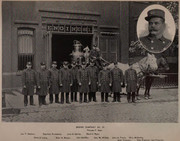
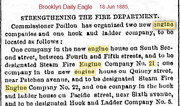
Engine 21 Brooklyn Fire Department - 1892:
"Engine Company No. 21 was organized on June 16, 1885. Its home is in South Second Street near Bedford Avenue, and a very comfortable place it is. There are three equine members of the company, and their names are " Tip," " Bill " and " George," and they furnish the power for transporting the engine and two-wheeled tender to and from fires. There is also a feline member whose name is " Jumbo," but so far as the size of the animal is concerned there is nothing to warrant the name. The district covered by this company on a first-alarm is bounded by Bushwick Creek, Union Avenue, Broadway and the East River. In it there are severity-seven boxes, and the company responds to calls from ninety-nine additional boxes on a second-alarm. Important portent buildings in the district are the large sugar houses along Kent Avenue extending back to the river-front, Palmer's cooperage, Pratt's oil works, Hinds and Ketcham's electrotyping establishment, Central Stamping Company, Electric Light Works, Industrial School, Public Schools Nos. 37, 17, 19; Primary School No. 2, and the branch of No. 19, Homceopathic Hospital, Eastern District Hospital, Eye and Ear Infirmary, the Novelty, Grand, Bedford, Amphion and Lee Avenue theatres, Christ Episcopal church, St. Paul's Episcopal church, St. Mark's Episcopal church, St. Peter's and Paul's Roman Catholic church, Bedford Avenue M. E. church, African M. E. church, Dr. Well's Presbyterian church, and two Lutheran churches.
Assistant Foreman JOHN A. TRAVIS was born in Brooklyn on July 15, 1853, was made a fireman on March 2, 1885, and advanced to the rank of Assistant Foreman July 1, 1891.
Engineer GEORGE M. WILLETS was born in Brooklyn in 1854, and became a member of the uniformed force on Jan. 24, 1887.
Driver THOMAS F. MAIN was born in New York on Oct. 4, 1858 ; he became a fireman Jan. 12, 1882, and was promoted to driver on June 16, 1885.
WILLIAM THOMAS SYLVESTER CANNING was born in Brooklyn on New Year s Day, 1661, and he has been a member of the Brooklyn Department since April 2, 1885.
FRANCIS SMITH JOSEPH O'Brien was born in Brooklyn on Oct. 30, 1849, and he has been a fireman since Sept. 15, 1876
JOHN SYLVESTER CARNEY is a native of Brooklyn, and was born Feb. 10, 1854. He was appointed Jan. 30, 1882.
CHRISTOPHER S. LEAVY was born in New York on Sept. 7, 1843, and his connection with the Fire Department began on May 4, 1871.
DAVID J. RYAN is a Brooklynite, and he was born on Dec. 25, 1862. He has been a member of Engine No. 21 since he was appointed on Dec. 14, 1885.
JAMES THOMAS GEATONS was born on Feb. 9, 1866, in Brooklyn, and has been a fireman since Aug. 1, 1889.
RICHARD HAROLD BROWN was also born in Brooklyn, Nov. 20, 1867. He is comparatively a new man in the business, having been appointed on Aug. 11, 1891.
JOHN STRIFFLER is also a new man in the service. He was born in New York City on Oct. 9, 1865, and was appointed to the force on March 23, 1891.
NAPOLEON DUCHARME hails from West Troy, N. Y., in which town he was born. He has been a member of this company since he was appointed to the uniformed force, on March 12, 1892.
Following are a few of the fires to which the company have been summoned on first, second and third alarms, and where they have done credit to themselves as well as the Department: Pratt's oil works, the Commercial Street sugar house, the North Seventh Street sugar house, Pahmer's cooperage, the Nostrand Avenue and Park Avenue flat-house fires, Hover's glass house, Church's soda works, the Bushwick glass works, Young's bagging factory, Furman Street stores, the Agricultural Works, and Contractor Clark's stables, where one hundred mules were roasted alive."
(from "Our firemen: the official history of the Brooklyn Fire Department, from the first volunteer to the latest appointee")
Ladder 4 Brooklyn Fire Department:
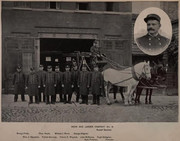

Hook and Ladder Company No 4 Brooklyn Fire Department - 1892:
"Hook and Ladder Company No. 4 has been in active service since the organization of the Paid Department. They are located in a district which is bounded on the north by Union Avenue and North Seventh Street ; on the east by Hayward Street ; on the south by Rodney Street and the Wallabout Basin, and on the west by the Wallabout Basin and the water-front extending up to North Seventh Street. In this district there are sixty-nine boxes. On a second-alarm of fire they respond to calls from ninety additional boxes. They are supplied with a first-class Hayes truck which has an 85-foot extension-ladder, and three powerful horses to draw it. The names of the horses are "George" and "Frank", both bays, and "Mikado", a gray, who takes his name from the comic opera of that name.
In the district covered by the company on a first-alarm is Batterman's dry goods house, and other large mercantile houses on Grand Street; Smith, Gray & Company, clothiers; Cross & Austin's moulding mill, several large knitting mills and machine shops. Hinds & Ketcham's paint works, Johnson's moulding mills, the Royal Baking Powder and Cleveland's Baking Powder companies' works, Vogel's tinware factory, the large sugar house on the water-front, and the immense freight depots of the Erie, Pennsylvania and the Baltimore & Ohio Railroad Companies. Also Palmer's cooperage, Pratt's oil works. Central Stamping Company, Electric Light Works, Nugent's electrotyping works, several public schools, three hospitals, the Lee Avenue, Bedford, Amphion, Grand and Novelty theatres, St. Peter's and St. Paul's Roman Catholic church, the Bedford Avenue, South Third Street and Roebling Methodist churches. Dr. Wells' Presbyterian church, St. Mark's Episcopal, Dr. Harkins' Episcopal, First Baptist and Central Baptist, All Souls Episcopal, two Lutheran churches, African M. E. church, St. John's M. E. church. Father Hoffman's Roman Catholic, St. Vincent De Paul's, Calvary Church, St. John's Methodist and Christ Episcopal churches.
The station of Truck No. 4 is on South Third Street near Driggs Avenue. Since the organization of the company the men have had some extremely bad fires to handle, among them being Pratt's oil works, the Standard oil works at different times. Palmer's cooperage, Havemeyer's sugar house, the Commercial Street and North Seventh Street sugar houses, the flat-house fires on Nostrand and Park Avenues, the Bushwick glass house. Young's bagging factory. Church's soda works, Agricultural Works, Clark's stables, Harbeck stores, Pierrepont stores, and in fact nearly all the big fires which have occurred since 1869.
Foreman Hugh Gallagher was born in County Fermanagh, Ireland, on March 25, 1856 ; and received his education at the common schools. He came to the United States in 1872, and became a member of the Brooklyn Fire Department on Nov. 30, 1881. He was promoted to the grade of Assistant Foreman on March 1, 1887, and to the rank of Foreman on July 1, 1889. Foreman Gallagher is one of the brave men in the Department who have rescued their fellow-beings at great risk to their own life and limb, and he has sustained injuries from accidents. On Nov. 13, 1885, he sat in the tillerman's seat when the axle of the apparatus broke. He was thrown violently to the pavement and sustained a compound fracture of the left elbow. On Decoration Day, 1886, he was riding on the extension-ladder of Truck No. 4, during the parade. The truck was decorated with a figure of Liberty, and Mr. Gallagher's duty was to see that no overhead obstructions swept it from its place. At Berry and South Ninth Street a large branch of a tree hung so low that the truck could not pass under it without disturbing the decorations. He was attempting to pull the branch out of the way when it broke and knocked him off the ladder. He was picked up unconscious two of his ribs were broken and his back was badly contused. It was a long while before he was able to resume his duties. In Nov., 1886, at a fire at No. 10 Jackson Square, he rescued an aged German woman who lived on the third floor, who had been overcome while trying to escape. On April 30, 1892, with the assistance of Firemen Rogers and Wayrick, he rescued the Scholer family, consisting of six persons, from the third floor of a burning dwelling.
Assistant Foreman John McKenna was born in Ireland, Dec. 17, 1845, and has been a member of the Department since its organization. Mr. McKenna was advanced to the rank of Assistant Foreman on June1, 1891.
Driver Daniel Edward Kain was born in New York City, Nov. 19, 1854, and has been in the Department since Jan. 27, 1882.
Patrick Kennedy, the tillerman, was born in Ireland, Dec. 2, 1845, and was appointed a fireman, Dec. 19, 1872.
George Rogers was born in New York City, Aug. 19, 1859, and his connection with the Department began on June 15, 1885. While a member of Engine Company No. 23, on Jan. 2, 1886, he saved a man from drowning at great risk to his own life. At a night fire on April 30, 1892, at No. 191 Broadway, he found a girl of seven years on the third floor, and carried her down the ladder and placed her in the arms of her distracted parents.
George W. Pratt was born in Massachusetts, Dec. 14, 1856, and he has been a most excellent worker since he became a member of the uniformed force, March 12, 1891.
Russell Glasier Gardner was born in New York City, Oct. 9, 1853, and has been a faithful member of the Brooklyn Department since April 1, 1885.
James V. Rhodes was born in Williamsburg, Jan. 8, 1875, and has been in the service since Sept. 1, 1878.
George Whitehead Keighler was born in New York City, Dec. 29, 1842. He served three years in the United States Navy during the war, and in the Volunteer Fire Department days was a member of Neptune Engine Company No. 7. He became a member of the Paid Department on March 6, 1878.
Francis Xavier Wayrick was born in Brooklyn on July i, 1858. He served three years and three months in the United States Navy, and was made a fireman by Commissioner Poillon on April 1, 1885.
Michael J. Short was born in Brooklyn, Oct. 15, 1854, and since he was made a fireman on Jan. 30, 1882, has been a faithful and useful member of the Department.
William John Stapleton was born in Brooklyn, Jan. 2, 1855, and on Jan. 30,1882, was appointed a member of the uniformed force.
James Smith was born in this city, Oct. 20, 1864. He was a plumber prior to his appointment on July 1, 1892. LODD SEPTEMBER 14, 1907
(from "Our firemen: the official history of the Brooklyn Fire Department, from the first volunteer to the latest appointee")
Ladder 104 163 S. 2nd Street:


163 s. 2nd Street:
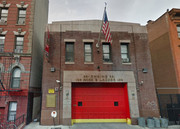
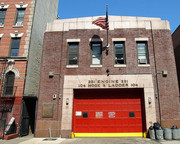
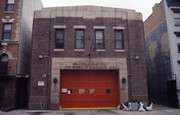
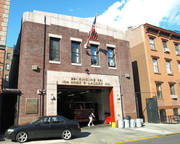
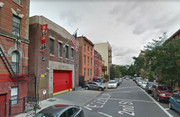
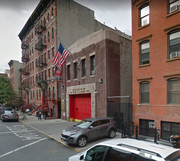


Engine 221:
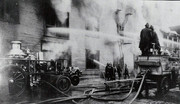

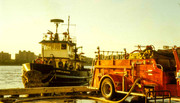
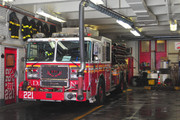
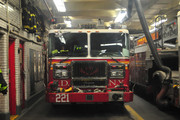
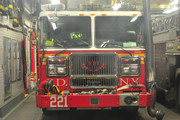
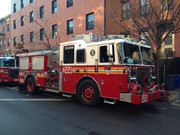
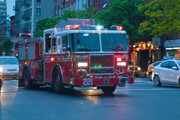
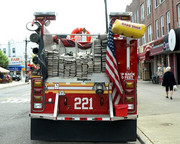
Ladder 104:

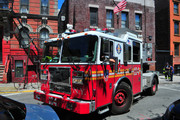

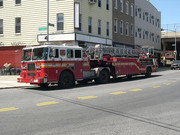
Engine 221/Ladder 104:
https://www.youtube.com/watch?v=RoRrYn1BLgY
https://www.youtube.com/watch?v=QwnGUSX1Y2Y
https://www.youtube.com/watch?v=2ZRvFysKGBI
https://www.youtube.com/watch?v=8I5XvYRCdi4
https://www.youtube.com/watch?v=O_wuvI2GXys
Ladder 104 tiller cam:
https://www.fireapparatusmagazine.com/articles/2018/08/tillercam-fdny-ladder-104.html
Engine 221/Ladder 104 collision - 1929:

Engine 221 Courthouse fire - 1929:
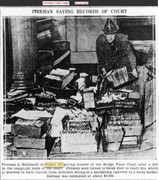
Engine 221 Brooklyn 4-4-244 February 26, 1970:
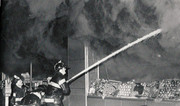
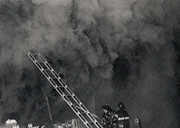
Engine 221 Brooklyn 2-2 236 June 17, 1976:
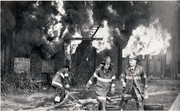
Engine 221/Ladder 104 medals:
ANTION HOLTERBACH FF. ENG. 221 FEB. 16, 1911 1912 BROOKLYN EAGLE


PATRICK J. SULLIVAN FF. ENG. 221 FEB. 16, 1911 1912 BROOKLYN CITIZENS

EDWARD J. MILLER CAPT. ENG. 221 MAR. 11, 1976 1977 PULASKI
JOHN J. MC GRATH FF. LAD. 104 NOV. 16, 1909 1909 1911 HURLEY
FF John J. McGrath was awarded the Hurley medal for a scaling ladder rescue on the 4th floor of a burning building.

EDWARD J. HARTTEN FF. LAD. 104 NOV. 6, 1915 1916 BROOKLYN CITIZENS
FF Edward J. Hartten was awarded the Brooklyn Citizens Medal Clarence A. Walsh was awarded the Hurley Medal and the Department Medal for heroic work rescuing 4 women and two men at the November 6, 1915 Diamond Candy factory fire. 10 people were killed at this fire.
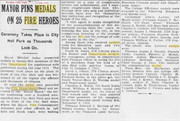
CLARENCE A. WALSH FF. LAD. 104 NOV. 6, 1915 1916 HURLEY
FF Clarence A. Walsh was awarded the William S. Hurley Medal for rescuing 4 women and two men at the November 6, 1915 Diamond Candy factory fire.
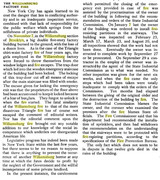
ISAAC LUDGATE CAPT. LAD. 104 1918 1919 STEPHENSON
Captain Isaac Ludgate received the 1918 Stephenson Medal awarded annually for the best FDNY company in administration and discipline matters.
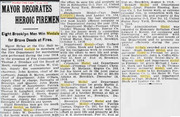
GEORGE S. KRASINA FF. LAD. 104 APR. 18, 1966 1967 HOLY NAME
Engine 221/Ladder 104 LODDs:
FIREFIGHTER PATRICK J. LEE ENGINE 221 May 16, 1919
FF Patrick J. Lee, driver for Engine 221, died as a result of injuries received while responding to a building fire.

LIEUTENANT RAYMOND F. SCHIEBEL ENGINE 221 March 7, 1995
On March 5, Lieutenant Raymond Schiebel of the New York City Fire Department (FDNY) went into cardiac arrest while operating at a fire in Brooklyn. Lieutenant Schiebel died two days later at a hospital. An investigation into the incident revealed that a paramedic allegedly failed to properly intubate Lieutenant Schiebel during resuscitation efforts, inserting the endotrachial tube into his esophagus instead of his trachea.
https://www.nytimes.com/1995/03/12/nyregion/pipes-and-drums-replace-golden-oldies-as-firefighter-is-mourned.html
FIREFIGHTER PAUL WARHOLA ENGINE 221 August 14, 2009
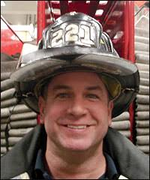

Firefighter Warhola, who was driving the fire apparatus responded with other members of Engine Company 221 to a fire alarm activation in Brooklyn, New York, on August 12, 2009. Upon arrival, Firefighter Warhola checked for a working fire hydrant outside the structure while other firefighters entered the building to investigate.
When the other firefighters returned to the street, Firefighter Warhola was experiencing dizziness and had difficulty breathing. As a result, he was provided medical treatment and was transported back to the firehouse. After examining Firefighter Warhola at the firehouse, paramedics recognized his symptoms as possibly stroke-related and transported him to the hospital. Firefighter Warhola?s condition worsened, however, and he passed away at the hospital, today, August 14, 2009. As always our most sincere condolences to his family and all affected on the loss of FF Warhola.
https://www.firehero.org/fallen-firefighter/paul-v-warhola/
CAPTAIN CHARLES KEEGAN, LADDER 104, September 15, 1882
Captain Charles Keegan was burned fighting an oil refinery fire on Newtown Creek, September 15, 1882.

FIREFIGHTER JAMES E. NUGENT, LADDER 104, April 15, 1901
FF James E. Nugent died April 15, 1901, as a result of smoke poisoning and injuries received operating at a building fire April 13, 1901.
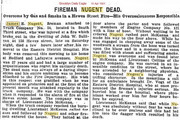
FIREFIGHTER JAMES SMITH LADDER 104 September 14, 1907
Fireman James Smith was seriously burned while moving a barrel of benzene from the basement of a five-story double brick apartment building. The basement was being used by a house painter for storage of paints and solvents with the first floor being his paint store. A small fire had started in a pile of paint rags in the basement. After the fire was out the firemen discovered the barrels of benzene and started to remove them. Two firemen, John Kennedy of Engine 112 (now Engine 212) and James Smith of Ladder 54 (now Ladder 104) were rolling one barrel to the stairs when it exploded. Both men were covered with the burning liquid and fell into a foot of water in the basement. Three other firemen rushed into the basement to rescue the two unfortunate ones and were badly burned themselves. All five were taken to a hospital where Fireman Smith died ten days later. It was thought that Fireman Kennedy would succumb to his injuries also, but he recovered. The fire died out before the firemen could put it out, doing only $100 damage to the basement. (From "The Last Alarm")
RIP. Never forget.
Williamsburg Brooklyn:
https://www.bklynlibrary.org/ourbrooklyn/williamsburg/
http://forgotten-ny.com/2006/07/williamsburg-part-one-brooklyn/
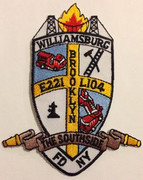
Engine 21 Brooklyn Fire Department organized 163 S. 2nd Street 1885
Engine 21 Brooklyn Fire Department became Engine 21 FDNY 1898
Engine 21 became Engine 121 1889
Engine 121 became Engine 221 1913
Engine 221 moved to 712 Driggs Avenue 1913
Engine 221 new firehouse 163 S. 2nd Street w/Ladder 104 1932
Ladder 4 Brooklyn Fire Department organized 114 S. 3rd Street former volunteer firehouse 1869
Ladder 4 Brooklyn 4 moved to unknown location 1888
Ladder 4 Brooklyn Fire Department new firehouse 114 S. 3rd Street 1888
Ladder 4 Brooklyn Fire Department became Ladder 4 FDNY 1898
Ladder 4 became Ladder 54 1899
Ladder 54 became Ladder 104 1913
Ladder 104 moved 163 S. 2nd Street 1913
Ladder 104 moved 166 Clymer Street at Engine 211 1931
Ladder 104 new firehouse 163 S. 2nd Street w/Engine 221 1932
Pre-Brooklyn Fire Department: Williamsburgh was protected by as many as 20 volunteer fire companies - 10 engines, 4 hose and 3 hook and ladders - as a township, a city and then as part of the city of Brooklyn before the paid Brooklyn Fire Department was established in 1869.
Engine 21 Brooklyn Fire Department:


Engine 21 Brooklyn Fire Department - 1892:
"Engine Company No. 21 was organized on June 16, 1885. Its home is in South Second Street near Bedford Avenue, and a very comfortable place it is. There are three equine members of the company, and their names are " Tip," " Bill " and " George," and they furnish the power for transporting the engine and two-wheeled tender to and from fires. There is also a feline member whose name is " Jumbo," but so far as the size of the animal is concerned there is nothing to warrant the name. The district covered by this company on a first-alarm is bounded by Bushwick Creek, Union Avenue, Broadway and the East River. In it there are severity-seven boxes, and the company responds to calls from ninety-nine additional boxes on a second-alarm. Important portent buildings in the district are the large sugar houses along Kent Avenue extending back to the river-front, Palmer's cooperage, Pratt's oil works, Hinds and Ketcham's electrotyping establishment, Central Stamping Company, Electric Light Works, Industrial School, Public Schools Nos. 37, 17, 19; Primary School No. 2, and the branch of No. 19, Homceopathic Hospital, Eastern District Hospital, Eye and Ear Infirmary, the Novelty, Grand, Bedford, Amphion and Lee Avenue theatres, Christ Episcopal church, St. Paul's Episcopal church, St. Mark's Episcopal church, St. Peter's and Paul's Roman Catholic church, Bedford Avenue M. E. church, African M. E. church, Dr. Well's Presbyterian church, and two Lutheran churches.
Assistant Foreman JOHN A. TRAVIS was born in Brooklyn on July 15, 1853, was made a fireman on March 2, 1885, and advanced to the rank of Assistant Foreman July 1, 1891.
Engineer GEORGE M. WILLETS was born in Brooklyn in 1854, and became a member of the uniformed force on Jan. 24, 1887.
Driver THOMAS F. MAIN was born in New York on Oct. 4, 1858 ; he became a fireman Jan. 12, 1882, and was promoted to driver on June 16, 1885.
WILLIAM THOMAS SYLVESTER CANNING was born in Brooklyn on New Year s Day, 1661, and he has been a member of the Brooklyn Department since April 2, 1885.
FRANCIS SMITH JOSEPH O'Brien was born in Brooklyn on Oct. 30, 1849, and he has been a fireman since Sept. 15, 1876
JOHN SYLVESTER CARNEY is a native of Brooklyn, and was born Feb. 10, 1854. He was appointed Jan. 30, 1882.
CHRISTOPHER S. LEAVY was born in New York on Sept. 7, 1843, and his connection with the Fire Department began on May 4, 1871.
DAVID J. RYAN is a Brooklynite, and he was born on Dec. 25, 1862. He has been a member of Engine No. 21 since he was appointed on Dec. 14, 1885.
JAMES THOMAS GEATONS was born on Feb. 9, 1866, in Brooklyn, and has been a fireman since Aug. 1, 1889.
RICHARD HAROLD BROWN was also born in Brooklyn, Nov. 20, 1867. He is comparatively a new man in the business, having been appointed on Aug. 11, 1891.
JOHN STRIFFLER is also a new man in the service. He was born in New York City on Oct. 9, 1865, and was appointed to the force on March 23, 1891.
NAPOLEON DUCHARME hails from West Troy, N. Y., in which town he was born. He has been a member of this company since he was appointed to the uniformed force, on March 12, 1892.
Following are a few of the fires to which the company have been summoned on first, second and third alarms, and where they have done credit to themselves as well as the Department: Pratt's oil works, the Commercial Street sugar house, the North Seventh Street sugar house, Pahmer's cooperage, the Nostrand Avenue and Park Avenue flat-house fires, Hover's glass house, Church's soda works, the Bushwick glass works, Young's bagging factory, Furman Street stores, the Agricultural Works, and Contractor Clark's stables, where one hundred mules were roasted alive."
(from "Our firemen: the official history of the Brooklyn Fire Department, from the first volunteer to the latest appointee")
Ladder 4 Brooklyn Fire Department:


Hook and Ladder Company No 4 Brooklyn Fire Department - 1892:
"Hook and Ladder Company No. 4 has been in active service since the organization of the Paid Department. They are located in a district which is bounded on the north by Union Avenue and North Seventh Street ; on the east by Hayward Street ; on the south by Rodney Street and the Wallabout Basin, and on the west by the Wallabout Basin and the water-front extending up to North Seventh Street. In this district there are sixty-nine boxes. On a second-alarm of fire they respond to calls from ninety additional boxes. They are supplied with a first-class Hayes truck which has an 85-foot extension-ladder, and three powerful horses to draw it. The names of the horses are "George" and "Frank", both bays, and "Mikado", a gray, who takes his name from the comic opera of that name.
In the district covered by the company on a first-alarm is Batterman's dry goods house, and other large mercantile houses on Grand Street; Smith, Gray & Company, clothiers; Cross & Austin's moulding mill, several large knitting mills and machine shops. Hinds & Ketcham's paint works, Johnson's moulding mills, the Royal Baking Powder and Cleveland's Baking Powder companies' works, Vogel's tinware factory, the large sugar house on the water-front, and the immense freight depots of the Erie, Pennsylvania and the Baltimore & Ohio Railroad Companies. Also Palmer's cooperage, Pratt's oil works. Central Stamping Company, Electric Light Works, Nugent's electrotyping works, several public schools, three hospitals, the Lee Avenue, Bedford, Amphion, Grand and Novelty theatres, St. Peter's and St. Paul's Roman Catholic church, the Bedford Avenue, South Third Street and Roebling Methodist churches. Dr. Wells' Presbyterian church, St. Mark's Episcopal, Dr. Harkins' Episcopal, First Baptist and Central Baptist, All Souls Episcopal, two Lutheran churches, African M. E. church, St. John's M. E. church. Father Hoffman's Roman Catholic, St. Vincent De Paul's, Calvary Church, St. John's Methodist and Christ Episcopal churches.
The station of Truck No. 4 is on South Third Street near Driggs Avenue. Since the organization of the company the men have had some extremely bad fires to handle, among them being Pratt's oil works, the Standard oil works at different times. Palmer's cooperage, Havemeyer's sugar house, the Commercial Street and North Seventh Street sugar houses, the flat-house fires on Nostrand and Park Avenues, the Bushwick glass house. Young's bagging factory. Church's soda works, Agricultural Works, Clark's stables, Harbeck stores, Pierrepont stores, and in fact nearly all the big fires which have occurred since 1869.
Foreman Hugh Gallagher was born in County Fermanagh, Ireland, on March 25, 1856 ; and received his education at the common schools. He came to the United States in 1872, and became a member of the Brooklyn Fire Department on Nov. 30, 1881. He was promoted to the grade of Assistant Foreman on March 1, 1887, and to the rank of Foreman on July 1, 1889. Foreman Gallagher is one of the brave men in the Department who have rescued their fellow-beings at great risk to their own life and limb, and he has sustained injuries from accidents. On Nov. 13, 1885, he sat in the tillerman's seat when the axle of the apparatus broke. He was thrown violently to the pavement and sustained a compound fracture of the left elbow. On Decoration Day, 1886, he was riding on the extension-ladder of Truck No. 4, during the parade. The truck was decorated with a figure of Liberty, and Mr. Gallagher's duty was to see that no overhead obstructions swept it from its place. At Berry and South Ninth Street a large branch of a tree hung so low that the truck could not pass under it without disturbing the decorations. He was attempting to pull the branch out of the way when it broke and knocked him off the ladder. He was picked up unconscious two of his ribs were broken and his back was badly contused. It was a long while before he was able to resume his duties. In Nov., 1886, at a fire at No. 10 Jackson Square, he rescued an aged German woman who lived on the third floor, who had been overcome while trying to escape. On April 30, 1892, with the assistance of Firemen Rogers and Wayrick, he rescued the Scholer family, consisting of six persons, from the third floor of a burning dwelling.
Assistant Foreman John McKenna was born in Ireland, Dec. 17, 1845, and has been a member of the Department since its organization. Mr. McKenna was advanced to the rank of Assistant Foreman on June1, 1891.
Driver Daniel Edward Kain was born in New York City, Nov. 19, 1854, and has been in the Department since Jan. 27, 1882.
Patrick Kennedy, the tillerman, was born in Ireland, Dec. 2, 1845, and was appointed a fireman, Dec. 19, 1872.
George Rogers was born in New York City, Aug. 19, 1859, and his connection with the Department began on June 15, 1885. While a member of Engine Company No. 23, on Jan. 2, 1886, he saved a man from drowning at great risk to his own life. At a night fire on April 30, 1892, at No. 191 Broadway, he found a girl of seven years on the third floor, and carried her down the ladder and placed her in the arms of her distracted parents.
George W. Pratt was born in Massachusetts, Dec. 14, 1856, and he has been a most excellent worker since he became a member of the uniformed force, March 12, 1891.
Russell Glasier Gardner was born in New York City, Oct. 9, 1853, and has been a faithful member of the Brooklyn Department since April 1, 1885.
James V. Rhodes was born in Williamsburg, Jan. 8, 1875, and has been in the service since Sept. 1, 1878.
George Whitehead Keighler was born in New York City, Dec. 29, 1842. He served three years in the United States Navy during the war, and in the Volunteer Fire Department days was a member of Neptune Engine Company No. 7. He became a member of the Paid Department on March 6, 1878.
Francis Xavier Wayrick was born in Brooklyn on July i, 1858. He served three years and three months in the United States Navy, and was made a fireman by Commissioner Poillon on April 1, 1885.
Michael J. Short was born in Brooklyn, Oct. 15, 1854, and since he was made a fireman on Jan. 30, 1882, has been a faithful and useful member of the Department.
William John Stapleton was born in Brooklyn, Jan. 2, 1855, and on Jan. 30,1882, was appointed a member of the uniformed force.
James Smith was born in this city, Oct. 20, 1864. He was a plumber prior to his appointment on July 1, 1892. LODD SEPTEMBER 14, 1907
(from "Our firemen: the official history of the Brooklyn Fire Department, from the first volunteer to the latest appointee")
Ladder 104 163 S. 2nd Street:


163 s. 2nd Street:








Engine 221:









Ladder 104:




Engine 221/Ladder 104:
https://www.youtube.com/watch?v=RoRrYn1BLgY
https://www.youtube.com/watch?v=QwnGUSX1Y2Y
https://www.youtube.com/watch?v=2ZRvFysKGBI
https://www.youtube.com/watch?v=8I5XvYRCdi4
https://www.youtube.com/watch?v=O_wuvI2GXys
Ladder 104 tiller cam:
https://www.fireapparatusmagazine.com/articles/2018/08/tillercam-fdny-ladder-104.html
Engine 221/Ladder 104 collision - 1929:

Engine 221 Courthouse fire - 1929:

Engine 221 Brooklyn 4-4-244 February 26, 1970:


Engine 221 Brooklyn 2-2 236 June 17, 1976:

Engine 221/Ladder 104 medals:
ANTION HOLTERBACH FF. ENG. 221 FEB. 16, 1911 1912 BROOKLYN EAGLE


PATRICK J. SULLIVAN FF. ENG. 221 FEB. 16, 1911 1912 BROOKLYN CITIZENS

EDWARD J. MILLER CAPT. ENG. 221 MAR. 11, 1976 1977 PULASKI
JOHN J. MC GRATH FF. LAD. 104 NOV. 16, 1909 1909 1911 HURLEY
FF John J. McGrath was awarded the Hurley medal for a scaling ladder rescue on the 4th floor of a burning building.

EDWARD J. HARTTEN FF. LAD. 104 NOV. 6, 1915 1916 BROOKLYN CITIZENS
FF Edward J. Hartten was awarded the Brooklyn Citizens Medal Clarence A. Walsh was awarded the Hurley Medal and the Department Medal for heroic work rescuing 4 women and two men at the November 6, 1915 Diamond Candy factory fire. 10 people were killed at this fire.

CLARENCE A. WALSH FF. LAD. 104 NOV. 6, 1915 1916 HURLEY
FF Clarence A. Walsh was awarded the William S. Hurley Medal for rescuing 4 women and two men at the November 6, 1915 Diamond Candy factory fire.

ISAAC LUDGATE CAPT. LAD. 104 1918 1919 STEPHENSON
Captain Isaac Ludgate received the 1918 Stephenson Medal awarded annually for the best FDNY company in administration and discipline matters.

GEORGE S. KRASINA FF. LAD. 104 APR. 18, 1966 1967 HOLY NAME
Engine 221/Ladder 104 LODDs:
FIREFIGHTER PATRICK J. LEE ENGINE 221 May 16, 1919
FF Patrick J. Lee, driver for Engine 221, died as a result of injuries received while responding to a building fire.

LIEUTENANT RAYMOND F. SCHIEBEL ENGINE 221 March 7, 1995
On March 5, Lieutenant Raymond Schiebel of the New York City Fire Department (FDNY) went into cardiac arrest while operating at a fire in Brooklyn. Lieutenant Schiebel died two days later at a hospital. An investigation into the incident revealed that a paramedic allegedly failed to properly intubate Lieutenant Schiebel during resuscitation efforts, inserting the endotrachial tube into his esophagus instead of his trachea.
https://www.nytimes.com/1995/03/12/nyregion/pipes-and-drums-replace-golden-oldies-as-firefighter-is-mourned.html
FIREFIGHTER PAUL WARHOLA ENGINE 221 August 14, 2009


Firefighter Warhola, who was driving the fire apparatus responded with other members of Engine Company 221 to a fire alarm activation in Brooklyn, New York, on August 12, 2009. Upon arrival, Firefighter Warhola checked for a working fire hydrant outside the structure while other firefighters entered the building to investigate.
When the other firefighters returned to the street, Firefighter Warhola was experiencing dizziness and had difficulty breathing. As a result, he was provided medical treatment and was transported back to the firehouse. After examining Firefighter Warhola at the firehouse, paramedics recognized his symptoms as possibly stroke-related and transported him to the hospital. Firefighter Warhola?s condition worsened, however, and he passed away at the hospital, today, August 14, 2009. As always our most sincere condolences to his family and all affected on the loss of FF Warhola.
https://www.firehero.org/fallen-firefighter/paul-v-warhola/
CAPTAIN CHARLES KEEGAN, LADDER 104, September 15, 1882
Captain Charles Keegan was burned fighting an oil refinery fire on Newtown Creek, September 15, 1882.

FIREFIGHTER JAMES E. NUGENT, LADDER 104, April 15, 1901
FF James E. Nugent died April 15, 1901, as a result of smoke poisoning and injuries received operating at a building fire April 13, 1901.

FIREFIGHTER JAMES SMITH LADDER 104 September 14, 1907
Fireman James Smith was seriously burned while moving a barrel of benzene from the basement of a five-story double brick apartment building. The basement was being used by a house painter for storage of paints and solvents with the first floor being his paint store. A small fire had started in a pile of paint rags in the basement. After the fire was out the firemen discovered the barrels of benzene and started to remove them. Two firemen, John Kennedy of Engine 112 (now Engine 212) and James Smith of Ladder 54 (now Ladder 104) were rolling one barrel to the stairs when it exploded. Both men were covered with the burning liquid and fell into a foot of water in the basement. Three other firemen rushed into the basement to rescue the two unfortunate ones and were badly burned themselves. All five were taken to a hospital where Fireman Smith died ten days later. It was thought that Fireman Kennedy would succumb to his injuries also, but he recovered. The fire died out before the firemen could put it out, doing only $100 damage to the basement. (From "The Last Alarm")
RIP. Never forget.
Williamsburg Brooklyn:
https://www.bklynlibrary.org/ourbrooklyn/williamsburg/
http://forgotten-ny.com/2006/07/williamsburg-part-one-brooklyn/

Williamsburg 2nd alarm - S 2nd Street and Driggs - 1989:
https://www.youtube.com/watch?v=JuNC9yZ6TrA
Williamsburg stolen car chase - Hope and Rodney - 1988:
https://www.youtube.com/watch?v=2tMcQQQPhbQ
Williamsburg 4th alarm Morgan and Flushing - 1988:
https://www.youtube.com/watch?v=GYMzmCsyTN8&t=84s
Williamsburg shootings Bedford between S 1st Street S 2nd Street:
https://www.youtube.com/watch?v=-TB15E74vzo
https://www.youtube.com/watch?v=JuNC9yZ6TrA
Williamsburg stolen car chase - Hope and Rodney - 1988:
https://www.youtube.com/watch?v=2tMcQQQPhbQ
Williamsburg 4th alarm Morgan and Flushing - 1988:
https://www.youtube.com/watch?v=GYMzmCsyTN8&t=84s
Williamsburg shootings Bedford between S 1st Street S 2nd Street:
https://www.youtube.com/watch?v=-TB15E74vzo
Engine 221/Ladder 104 fire:
4th Alarm - 285-287 N. Sixth Street, Williamsburg -Diamond Candy Company factory - 12 fatalities - November 6, 1915:
The Tragic Diamond Candy Company Fire of 1915
In Researching the history of North Brooklyn it is staggering how often the area suffered fires and how large and deadly they were. We are all aware of the tragic explosion in the East Village last week and the Diamond Fire was even more tragic. On November 6, 1915 twelve people, mostly women, lost their lives because a fire broke out and the factory owners were in violation of the fire code and there were not enough exits for people to escape. The fire took place at 285-287 North Sixth Street. The building was gutted, but it was the awful human toll that was worst.
Edward Diamond and his wife Celia were charged with criminal negligence and homicide as a result of their failure to follow the fire code. They had been ordered to fire-proof the halls of their factory months earlier, but they had not complied. Four years earlier New York had experienced the horror of the Triangle Shirt factory fire in which one hundred and forty-six people died. New York responded by supposedly becoming very strict with fire code, but apparently the Diamonds learned nothing from the Triangle fire.There were many explanations as to how and where the fire started, but the one grim fact was that the fire spread with lightning speed. There were two hundred people employed in the building and when the flames spread with such rapidity it created a general panic. The Daily Eagle reported that the stairs and fire escapes ? A straggling mass of humanity clogged the stairs and fire escapes.? Although they had done fire drills people lost all sense of order and they pressed ahead jamming the exits. The fire was reported at one forty and quickly there were twelve streams of water, but it was already too late for the doomed building as the roof collapsed and the other floors quickly followed.
One of the workers in the candy factory explained that he and others made it to the roof, but the roof door was locked. Workers ran to the windows and saw a sheet of flame rising towards their floor that terrified them.
There was a hero at the fire though. The night watchman, Thomas Savino, had come to the factory to collect his check. When he saw the flames he entered the burning building and despite being seared by the flames he managed to lead at least seventy-five frightened women out of the factory and the fire Marshall said that these women owed the watchmen their lives.
- from Historicgreenpoint
4th Alarm - 285-287 N. Sixth Street, Williamsburg -Diamond Candy Company factory - 12 fatalities - November 6, 1915:
The Tragic Diamond Candy Company Fire of 1915
In Researching the history of North Brooklyn it is staggering how often the area suffered fires and how large and deadly they were. We are all aware of the tragic explosion in the East Village last week and the Diamond Fire was even more tragic. On November 6, 1915 twelve people, mostly women, lost their lives because a fire broke out and the factory owners were in violation of the fire code and there were not enough exits for people to escape. The fire took place at 285-287 North Sixth Street. The building was gutted, but it was the awful human toll that was worst.
Edward Diamond and his wife Celia were charged with criminal negligence and homicide as a result of their failure to follow the fire code. They had been ordered to fire-proof the halls of their factory months earlier, but they had not complied. Four years earlier New York had experienced the horror of the Triangle Shirt factory fire in which one hundred and forty-six people died. New York responded by supposedly becoming very strict with fire code, but apparently the Diamonds learned nothing from the Triangle fire.There were many explanations as to how and where the fire started, but the one grim fact was that the fire spread with lightning speed. There were two hundred people employed in the building and when the flames spread with such rapidity it created a general panic. The Daily Eagle reported that the stairs and fire escapes ? A straggling mass of humanity clogged the stairs and fire escapes.? Although they had done fire drills people lost all sense of order and they pressed ahead jamming the exits. The fire was reported at one forty and quickly there were twelve streams of water, but it was already too late for the doomed building as the roof collapsed and the other floors quickly followed.
One of the workers in the candy factory explained that he and others made it to the roof, but the roof door was locked. Workers ran to the windows and saw a sheet of flame rising towards their floor that terrified them.
There was a hero at the fire though. The night watchman, Thomas Savino, had come to the factory to collect his check. When he saw the flames he entered the burning building and despite being seared by the flames he managed to lead at least seventy-five frightened women out of the factory and the fire Marshall said that these women owed the watchmen their lives.
- from Historicgreenpoint
Engine 64/Ladder 47 firehouses 1214/1220 Castle Hill Avenue Castle Hill, Bronx Division 6, Battalion 3 "The Castle Hill Gang"
Engine 64 organized 2152 Gleason Avenue former volunteer firehouse 1896
Engine 64 new firehouse 1214 Castle Hill Avenue 1908
Ladder 47 organized new firehouse 1220 Castle Hill Avenue 1913
Engine 64 - 1214 Castle Hill Avenue:
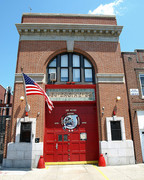
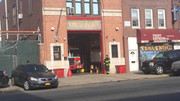
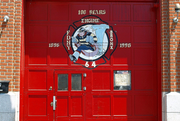
Ladder 47 - 1220 Castle Hill Avenue:
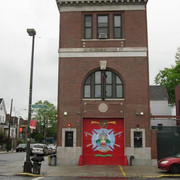
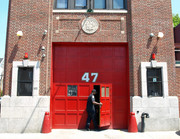
1214/1220 Castle Hill Avenue:
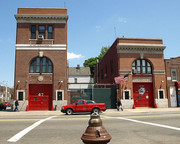
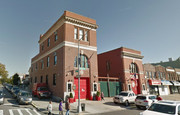

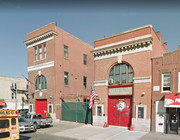
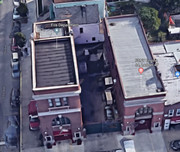
Engine 64:
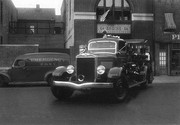
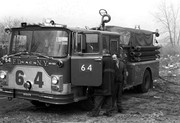
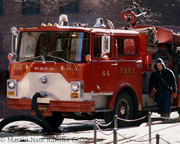
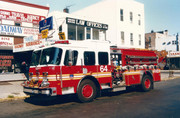
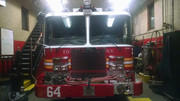
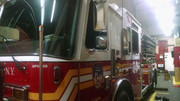
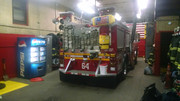
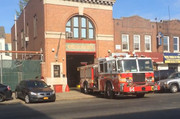

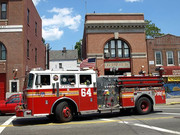
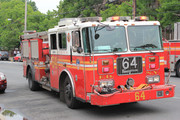
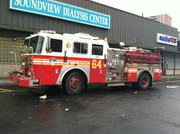
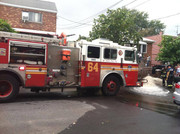
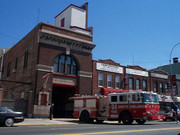
Ladder 47:
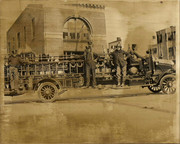


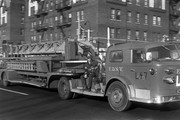
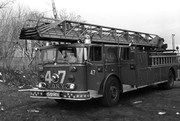
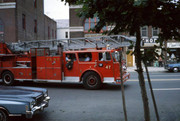
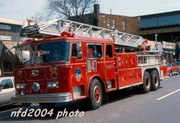
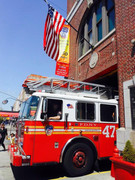

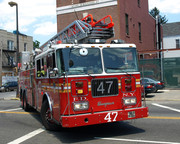

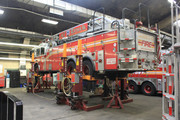
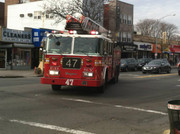

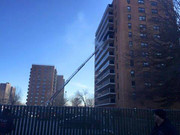
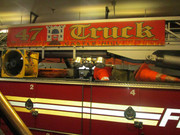
SSL 47:
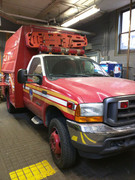
Engine 64/Ladder 47:
https://www.youtube.com/watch?v=pvCD_Mq0Yfg
https://www.youtube.com/watch?v=i3qOBpX_fRM
https://www.youtube.com/watch?v=x1yqk40yInE
https://www.youtube.com/watch?v=EGzaqvWmUKQ
Engine 64/Ladder 47 medals:
PATSY P. COPPOLA FF. ENG. 64 MAY 20, 1994 1995 PULASKI
DENNIS D. MUNNELLY LT. LAD. 47 L-54 JAN. 21, 1991 1991 THIRD ALARM
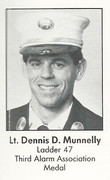
DENNIS D. MUNNELLY LT. LAD. 47 MAY 27, 1995 1995 FIRE MARSHALS
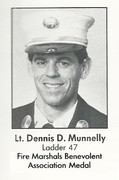
ROBERT E. LEE LT. LAD 47 OCT. 28, 2013 2014 JAMES GORDON BENNETT
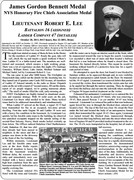
Engine 64/Ladder 47 LODDs:
LIEUTENANT LOUIS W. FINGER ENGINE 64 May 7, 1953
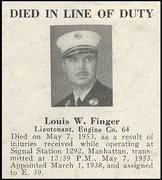
LIEUTENANT ROBERT COURTENAY LADDER 47 November 21, 1978
LT Robert Courtenay, a 22 year FDNY veteran, died November 21, 1978 as a result of injuries received in the line of duty.
RIP. Never forget.
Castle Hill:
https://en.wikipedia.org/wiki/Castle_Hill,_Bronx
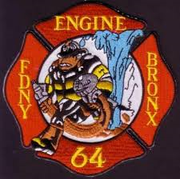
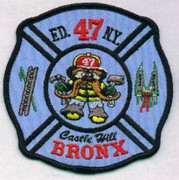
Engine 64 organized 2152 Gleason Avenue former volunteer firehouse 1896
Engine 64 new firehouse 1214 Castle Hill Avenue 1908
Ladder 47 organized new firehouse 1220 Castle Hill Avenue 1913
Engine 64 - 1214 Castle Hill Avenue:



Ladder 47 - 1220 Castle Hill Avenue:


1214/1220 Castle Hill Avenue:





Engine 64:














Ladder 47:
















SSL 47:

Engine 64/Ladder 47:
https://www.youtube.com/watch?v=pvCD_Mq0Yfg
https://www.youtube.com/watch?v=i3qOBpX_fRM
https://www.youtube.com/watch?v=x1yqk40yInE
https://www.youtube.com/watch?v=EGzaqvWmUKQ
Engine 64/Ladder 47 medals:
PATSY P. COPPOLA FF. ENG. 64 MAY 20, 1994 1995 PULASKI
DENNIS D. MUNNELLY LT. LAD. 47 L-54 JAN. 21, 1991 1991 THIRD ALARM

DENNIS D. MUNNELLY LT. LAD. 47 MAY 27, 1995 1995 FIRE MARSHALS

ROBERT E. LEE LT. LAD 47 OCT. 28, 2013 2014 JAMES GORDON BENNETT

Engine 64/Ladder 47 LODDs:
LIEUTENANT LOUIS W. FINGER ENGINE 64 May 7, 1953

LIEUTENANT ROBERT COURTENAY LADDER 47 November 21, 1978
LT Robert Courtenay, a 22 year FDNY veteran, died November 21, 1978 as a result of injuries received in the line of duty.
RIP. Never forget.
Castle Hill:
https://en.wikipedia.org/wiki/Castle_Hill,_Bronx


Bronx 2-2-2851 0413 Hrs. October 28, 2013:
Uniformed Firefighters Association
"Amid High Heat and Low Visibility, Reacting Coolly and With Clarity
Chief Leader - June 10, 2014
by RICHARD STEIER
"In recounting the deeds that led firefighters of various ranks to capture 51 of the 65 medals presented June 4 on FDNY Medal Day, there was a recurring theme: battling through poor visibility as flames and smoke intensified to pull people trapped in their homes to safety.
None did it better than Lieut. Robert E. Lee.
?There Were Gonna Be People?
Normally assigned to Battalion 16 in The Bronx, he was detailed to Ladder Co. 47 on Oct. 28 last year when shortly after 4 a.m. a report came in of six people trapped inside a private home. As the company?s rig left its Castle Hill Ave. quarters, Lieutenant Lee was already figuring some of those people would not find their way to safety by the time their truck arrived because of the hour of the blaze.
?We knew at the time, private dwelling, there were gonna be people in there,? he told reporters at the 69th Regiment Armory on Lexington Ave.
By the time they arrived, they learned that two children had been passed out of the building to neighbors. When Lieutenant Lee led his forcible-entry team into the building, they were confronted by heavy smoke and high heat from the open basement stairwell.
?Even without the protection of a hose line, he led his firefighters forward, undaunted, unwavering,? Mayor de Blasio told the large crowd of award-winners, family members and members of their companies inside the armory.
The Lieutenant dispatched two of his firefighters to conduct a search inside the front of the building while moving toward the back himself. A hallway led him to a rear bedroom where the door was closed while a fire burned in the basement, making it impossible to move a hose line in there to get water on the blaze from below.
Furniture Blocked Entry
Mr. Lee, who is 43, tried the door and found it partly blocked by furniture inside the bedroom, forcing him to squeeze his way in and, while unable to see anything, found an adult woman lying on the floor, unresponsive. He pulled some debris off her and then maneuvered her towards the doorway and through the narrow opening, then dragged her down the hallway and onto the sidewalk where she could receive medical attention.
He was exhausted, but it didn?t matter: he re-entered the building, passing one of his firefighters and others from Rescue 3; in both cases they were bringing other trapped people to safety. He made his way back to the rear bedroom, and during a search underneath a bed found a child lying there who he later learned was 13.
Asked what had been going through his mind when he decided to return to the bedroom rather than deferring to less-weary colleagues, Lieutenant Lee said, ?To be honest with you, I thought about my wife and daughter,? who was about the same age as the girl he then pulled to safety. ?I knew where the room was. I just wanted to make sure we could get someone out.?
He seemed to feel he was being given too much credit, insisting he did what any firefighter would do if placed in the same circumstances, and made a point of asking that a Firefighter from Rescue 3, Dave Donatelli, be mentioned for his efforts inside the building.
Got FDNY?s Top Honor
The Fire Department wasn?t as inclined to shrug off the feat as just one of those things anyone might do in his place: it gave Lieutenant Lee the James Gordon Bennett Medal, the FDNY?s highest award, and he also received the New York State Fire Chiefs Association Medal.
The 19-year veteran, who prior to joining the department spent four years in the Navy and served in Operation Desert Storm, said he had yet to meet face to face the woman and her daughter whose lives he had saved, explaining that they had come to the company on days when he wasn?t working and met other firefighters who had been involved. But the chance to meet those you?ve rescued, he said, is ?probably the most rewarding part of the whole thing. This???meaning the awards ceremony??is nice, but seeing the person face to face is the most rewarding.?"
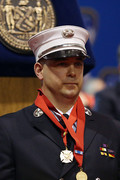
Uniformed Firefighters Association
"Amid High Heat and Low Visibility, Reacting Coolly and With Clarity
Chief Leader - June 10, 2014
by RICHARD STEIER
"In recounting the deeds that led firefighters of various ranks to capture 51 of the 65 medals presented June 4 on FDNY Medal Day, there was a recurring theme: battling through poor visibility as flames and smoke intensified to pull people trapped in their homes to safety.
None did it better than Lieut. Robert E. Lee.
?There Were Gonna Be People?
Normally assigned to Battalion 16 in The Bronx, he was detailed to Ladder Co. 47 on Oct. 28 last year when shortly after 4 a.m. a report came in of six people trapped inside a private home. As the company?s rig left its Castle Hill Ave. quarters, Lieutenant Lee was already figuring some of those people would not find their way to safety by the time their truck arrived because of the hour of the blaze.
?We knew at the time, private dwelling, there were gonna be people in there,? he told reporters at the 69th Regiment Armory on Lexington Ave.
By the time they arrived, they learned that two children had been passed out of the building to neighbors. When Lieutenant Lee led his forcible-entry team into the building, they were confronted by heavy smoke and high heat from the open basement stairwell.
?Even without the protection of a hose line, he led his firefighters forward, undaunted, unwavering,? Mayor de Blasio told the large crowd of award-winners, family members and members of their companies inside the armory.
The Lieutenant dispatched two of his firefighters to conduct a search inside the front of the building while moving toward the back himself. A hallway led him to a rear bedroom where the door was closed while a fire burned in the basement, making it impossible to move a hose line in there to get water on the blaze from below.
Furniture Blocked Entry
Mr. Lee, who is 43, tried the door and found it partly blocked by furniture inside the bedroom, forcing him to squeeze his way in and, while unable to see anything, found an adult woman lying on the floor, unresponsive. He pulled some debris off her and then maneuvered her towards the doorway and through the narrow opening, then dragged her down the hallway and onto the sidewalk where she could receive medical attention.
He was exhausted, but it didn?t matter: he re-entered the building, passing one of his firefighters and others from Rescue 3; in both cases they were bringing other trapped people to safety. He made his way back to the rear bedroom, and during a search underneath a bed found a child lying there who he later learned was 13.
Asked what had been going through his mind when he decided to return to the bedroom rather than deferring to less-weary colleagues, Lieutenant Lee said, ?To be honest with you, I thought about my wife and daughter,? who was about the same age as the girl he then pulled to safety. ?I knew where the room was. I just wanted to make sure we could get someone out.?
He seemed to feel he was being given too much credit, insisting he did what any firefighter would do if placed in the same circumstances, and made a point of asking that a Firefighter from Rescue 3, Dave Donatelli, be mentioned for his efforts inside the building.
Got FDNY?s Top Honor
The Fire Department wasn?t as inclined to shrug off the feat as just one of those things anyone might do in his place: it gave Lieutenant Lee the James Gordon Bennett Medal, the FDNY?s highest award, and he also received the New York State Fire Chiefs Association Medal.
The 19-year veteran, who prior to joining the department spent four years in the Navy and served in Operation Desert Storm, said he had yet to meet face to face the woman and her daughter whose lives he had saved, explaining that they had come to the company on days when he wasn?t working and met other firefighters who had been involved. But the chance to meet those you?ve rescued, he said, is ?probably the most rewarding part of the whole thing. This???meaning the awards ceremony??is nice, but seeing the person face to face is the most rewarding.?"

- Joined
- Apr 13, 2012
- Messages
- 9,731
Wow, 47 Truck has a huge response area, 1st-3rd Due. Love love seeing the response area maps posted in the firehouses. Any more out there for companies??
- Joined
- Mar 8, 2007
- Messages
- 5,392
You should've seen their response area before Ladders 54, 58 & 61 came on.FDNYSTATENISLAND said:Wow, 47 Truck has a huge response area, 1st-3rd Due. Love love seeing the response area maps posted in the firehouses. Any more out there for companies??
ladder197 said:Whatever happened to that E-One?
According to the July-August 1996 issue of Fire Apparatus Journal (Volume 13, Number 4), in the F.D.N.Y. Updates column by Jack Lerch, this pumper was loaned to the F.D.N.Y. by E-One for evaluation. It is a 1995 E-One Hush (EP9601) equipped with a Hale two-stage 1000gpm pump, 500 gallon booster tank, a Mack E-7 electronic diesel engine, and an Allison HD World transmission. It was assigned for short periods of time to E275, E8, E64, and E290 before being returned to E-One. - per downtownmedic earlier post
Stumptown Opens Third New York Cafe in Historic Brooklyn Firehouse
Stumptown?s new coffee bar in the Cobble Hill neighborhood of Brooklyn, New York. Portland, Oregon-based Stumptown Coffee Roasters today opened its third cafe in the New York area, inside an historic firehouse building in Brooklyn?s Cobble Hill neighborhood.
https://dailycoffeenews.com/2018/07/30/stumptown-opens-third-new-york-cafe-in-historic-brooklyn-firehouse/
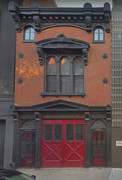
Former firehouse of pre-Brooklyn Fire Department Engine 19 "Empire" - 212 Pacific Street
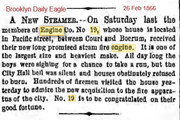
Stumptown?s new coffee bar in the Cobble Hill neighborhood of Brooklyn, New York. Portland, Oregon-based Stumptown Coffee Roasters today opened its third cafe in the New York area, inside an historic firehouse building in Brooklyn?s Cobble Hill neighborhood.
https://dailycoffeenews.com/2018/07/30/stumptown-opens-third-new-york-cafe-in-historic-brooklyn-firehouse/

Former firehouse of pre-Brooklyn Fire Department Engine 19 "Empire" - 212 Pacific Street

guitarman314 said:You should've seen their response area before Ladders 54, 58 & 61 came on.FDNYSTATENISLAND said:Wow, 47 Truck has a huge response area, 1st-3rd Due. Love love seeing the response area maps posted in the firehouses. Any more out there for companies??
Tom you are on the money.My aunt lived in Parkchester in the 50's and I used to walk to L47 (separate house from 64).I counted the Boxes on the running board which was in the Housewatch area and they had 654 first alarm boxes.I don't remember how may boxes L47 ran in with L31 but they did have some.
Engine 282/Ladder 148 firehouse 4210 12th Avenue Borough Park, Brooklyn Division 11, Battalion 48 "It Ain't Easy"
Engine 282 organized new firehouse 4210 12th Avenue 1913
Engine 282 moved 126 Foster Avenue at Engine 250 2002
Engine 282 moved 5011 7th Avenue at Battalion 40 2003
Engine 282 returned 4210 12th Avenue w/Ladder 148 2004
Ladder 148 organized 4210 12th Avenue at Engine 282 1914
Ladder 148 moved 1336 60th Street at Engine 247 2002
Ladder 148 returned 4210 12th Avenue w/Engine 282 2004
4210 12th Avenue:
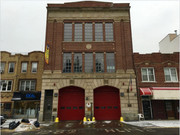
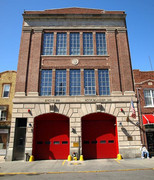
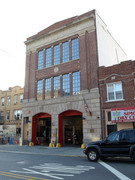
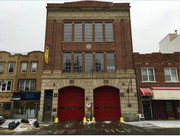
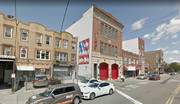
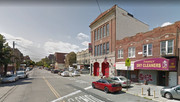
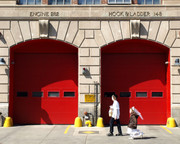
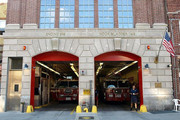
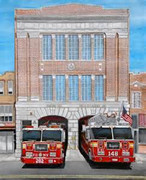

Engine 282:
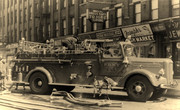
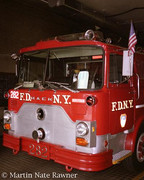
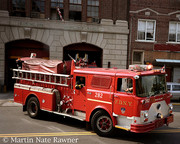
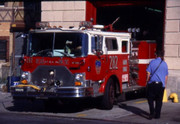
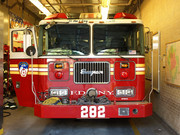
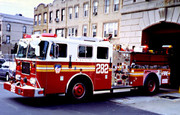
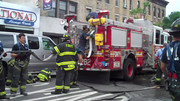
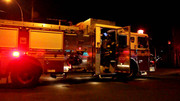
Ladder 148:
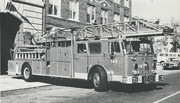
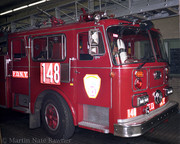
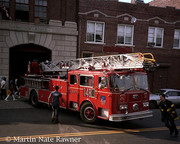
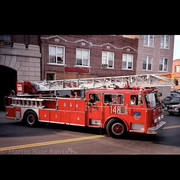
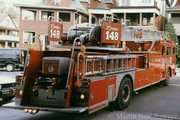
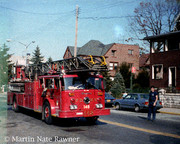
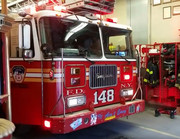
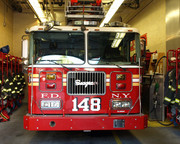

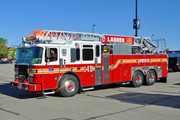
Engine 282/Ladder 148:
https://www.youtube.com/watch?v=IJvi5R1Yuco
https://www.youtube.com/watch?v=SYdgytN3oIM
https://www.youtube.com/watch?v=ZdZf8md86Vc
https://www.youtube.com/watch?v=emBjaQ374KA
Centennial:
Brooklyn firehouse celebrates 100-year anniversary - from Brooklyn Downtown Star
by Jess Berry
May 23, 2014
Hundreds of uniformed firefighters filled the quarters of Engine 282 and Ladder 148 last Thursday to celebrate 100 years of service to the community. Firefighters past and present of EC 282 and Ladder 148 joined together with family and friends to celebrate the firehouse's centennial. The mood of the ceremony was at times silly, as past and present firefighters joked about shared memories, and at times somber, such as when current captain of Ladder 148 Michael Doda remembered those who have lost their lives in service.
?I often reflect on friends we?ve lost,? Doda said. ?However, there?s no greater tribute to their memories than to assemble here and reflect on our history. Our hearts swell with pride to see friends, retired and former members, all gathered here with our current firefighters.?
Doda gave a brief history of Engine 282 and Ladder 148. Hook and Ladder 148 was organized on May 15, 1914, under the command of Captain David O?Keefe. Engine 282 was then added, and two lieutenants and 100 firefighters were assembled from neighboring companies.
He reflected on the similarities that have persisted throughout 100 years of the firehouse's history. ?There?s an old proverb: ?The more things change, the more things stay the same,?? Doda said. ?This will always ring true for the New York City Fire Department. If Captain O?Keefe walked through those doors today, the changes to the neighborhood, the fire service, the world may be unimaginable to him. But the one constant is the perpetual brotherhood. ?Today, much like Captain O?Keefe in 1914, I find myself surrounded by hardworking firefighters dedicated to making this house the best we have to offer,? he added.
Retired members who played a large role in that history enjoyed the celebration as well, such as John LeVine, a former captain of Engine 282 who retired in 1977. ?It?s great to be with the guys again,? LeVine said. ?A couple of these guys really helped me with my transition from lieutenant to captain. And it wasn?t easy, but it worked out good. I mean, I enjoyed it very much. It was a pleasure.? When asked how it felt to put his uniform back on, 89-year-old LeVine said it was ?a little loose!? ?It?s great,? he said. ?It?s like being reborn.?
This letter was read during the celebration in 2014.
A Letter from the Captain:
On May 15th, 1914 Hook & Ladder Company 148 was under the command of Captain David O?Keefe. A new motorized ladder truck was placed in quarters with Engine Company 282. Ladder 148 was needed to provide protection to the neighborhoods between Engine 247 and Engine 250. The two Lieutenants and eleven firefighters that formed the company were assembled primarily for neighboring companies. As when any new company is formed firefighters, and officers are selected for being hard working and dedicated professionals.
I marvel at what Captain O?Keefe was faced with. He had a new unit in a bourgeoning area of Brooklyn. Once called Blythebourne (Scottish for happy home) the area began to be populated in 1887 with small cottages, but soon the streets began to bustle with people, and large fancy Queen Anne style private homes were added to the landscape. The area between the Bath Beach Railroad and the West End Line, now called Boro Park, was becoming sought after and the population was exploding. By the time Ladder 148 was formed, Brooklyn Rapid Transit had begun to elevate both lines of the train and consolidate some of the smaller lines. By the 1920's single family homes were giving way to large multifamily apartment buildings, each with a uniformed doorman, in response to the growing demand for housing.
Ladder 148 was established shortly after the second major reorganization of the FDNY on January 1, 1913. Many older Brooklyn Fire Companies were renumbered as in 1898 and four 'Combination' Engine Companies surrounding New Utrecht had their horse drawn ladder disbanded. The 9th New York City Fire Commissioner - Robert Adamson worked during his tenure to have the entire department motorized. Ladder 148 was an early part of that movement.
Thank you for attending this celebration and honoring 100 years of devoted service to this community. I often reflect on the friends we have lost, however there is no greater tribute to their memories, than assemble here today and reflect on our history. My heart swells with pride to witness friends, retired and former members, as well as our current firefighters, gather together, to insure this Centennial Celebration was an enormous success. It was your perseverance and attention to detail that accomplished this enormous task, and for this I am forever grateful.
There is an old proverb ?The more things change the more they stay the same? This will always ring true for the NYC Fire Department. If Captain O'Keefe walked thru the doors of the firehouse today, the changes to the neighborhood, the fire service, and the world, may be unimaginable, but the one constant is the perpetual brotherhood. He would feel right at home. Today, much like Captain O?Keefe in 1914, I find myself surrounded by hardworking firefighters dedicated to making Ladder Company 148 the best in the FDNY. It is my honor to be part of that future.
Respectfully,
Captain Michael Doda
Hook & Ladder Co. 148
Engine 282/Ladder 148 medals:
MICHAEL P. CASHMAN FF. ENG. 282 AUG. 31, 1920 1921 BROOKLYN CITIZENS

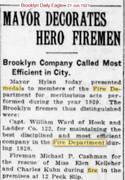
JAMES P. MC CHRONE LT. LAD. 148 JAN. 29, 1922 1923 BROOKLYN CITIZENS
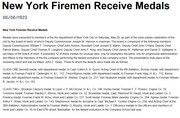
THOMAS J. MULGANNON FF. LAD. 148 JUL. 12, 1948 1949 BROOKLYN CITIZENS
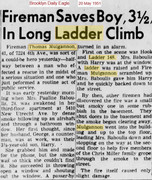
PAUL DI GEORGIO FF. LAD. 148 AUG. 6, 1993 1994 HOLY NAME
MICHAEL T. QUILTY FF. LAD. 148 JAN. 17, 1996 1997 FIRE MARSHALS
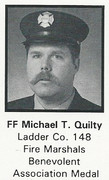
Engine 282/Ladder 148 LODDs:
FIREFIGHTER GERALD T. HANLEY ENGINE 282 December 13, 1939
Fireman Gerald T. Hanley died of smoke poisoning while fighting a small blaze at 1179 51st Street. He was the second Probationary Fireman killed in Brooklyn in less than a month. Hanley and two other members of Engine 282 rushed into the smoke filled apartment at 1179 51st Street and all three were overcome by the smoke. Rescue 2 worked over Hanley for more than three hours before he was pronounced dead. Fireman Dunn, one of the other members overcome, was a classmate of Hanley, but he recovered.
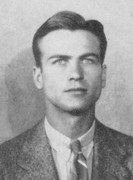

FIREFIGHTER JAMES A. DINGEE ENGINE 282 August 23, 1943
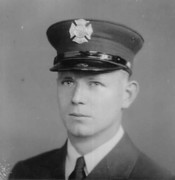
James Dingee, Engine 282, was inducted into the US Navy during World War II. His armed service number was 8087463. He was killed in action. He was assigned as a Navy firefighter to the USS Narragansett (AT-88), a Navajo-class fleet tug constructed for the United States Navy during World War II. Her purpose was to aid ships, usually by towing, on the high seas or in combat or post-combat areas, plus "other duties as assigned." She served in the Atlantic Ocean and, at war?s end, returned home proudly with three battle stars to her credit. At 0430 on 23 August, the Luftwaffe raided Palermo, with bombs scoring on nearby service craft and a near miss wounding two of AT-88's crew. Narragansett's remaining crew immediately set to work to aid the damaged vessels despite explosions which exacted a heavy toll among the fire fighters and damage control sections. Six were dead and 12 seriously wounded before it was over.
CAPTAIN THOMAS F. KEARNS LADDER 148 April 12, 1917
Captain Thomas Kearns died at a working fire at 187 Pearl Street from smoke inhalation advancing a hose line while working at Engine 207.
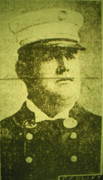

CAPTAIN THOMAS P. MULVANEY LADDER 148 January 16, 1959
He died as a result of injuries sustained in the performance of his duties.
Prior 1930 rescue and award:

LIEUTENANT PHILIP PETTI LADDER 148 September 11, 2001
LT Philip Petti died at the World Trade Center September 11, 2001.
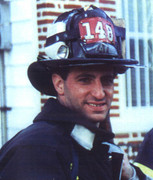

https://www.silive.com/september-11/index.ssf/2010/09/philip_petti_43_lieutenant_ama.html
https://www.firehero.org/fallen-firefighter/philip-s-petti/
http://www.legacy.com/sept11/story.aspx?personid=151807
RIP. Never forget.
Borough Park:
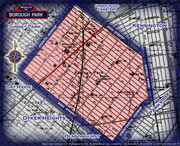
http://forgotten-ny.com/2011/10/borough-park/
https://en.wikipedia.org/wiki/Borough_Park,_Brooklyn
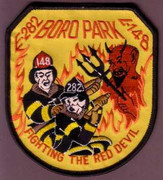
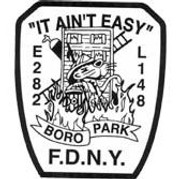
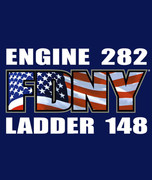
Engine 282 organized new firehouse 4210 12th Avenue 1913
Engine 282 moved 126 Foster Avenue at Engine 250 2002
Engine 282 moved 5011 7th Avenue at Battalion 40 2003
Engine 282 returned 4210 12th Avenue w/Ladder 148 2004
Ladder 148 organized 4210 12th Avenue at Engine 282 1914
Ladder 148 moved 1336 60th Street at Engine 247 2002
Ladder 148 returned 4210 12th Avenue w/Engine 282 2004
4210 12th Avenue:










Engine 282:








Ladder 148:










Engine 282/Ladder 148:
https://www.youtube.com/watch?v=IJvi5R1Yuco
https://www.youtube.com/watch?v=SYdgytN3oIM
https://www.youtube.com/watch?v=ZdZf8md86Vc
https://www.youtube.com/watch?v=emBjaQ374KA
Centennial:
Brooklyn firehouse celebrates 100-year anniversary - from Brooklyn Downtown Star
by Jess Berry
May 23, 2014
Hundreds of uniformed firefighters filled the quarters of Engine 282 and Ladder 148 last Thursday to celebrate 100 years of service to the community. Firefighters past and present of EC 282 and Ladder 148 joined together with family and friends to celebrate the firehouse's centennial. The mood of the ceremony was at times silly, as past and present firefighters joked about shared memories, and at times somber, such as when current captain of Ladder 148 Michael Doda remembered those who have lost their lives in service.
?I often reflect on friends we?ve lost,? Doda said. ?However, there?s no greater tribute to their memories than to assemble here and reflect on our history. Our hearts swell with pride to see friends, retired and former members, all gathered here with our current firefighters.?
Doda gave a brief history of Engine 282 and Ladder 148. Hook and Ladder 148 was organized on May 15, 1914, under the command of Captain David O?Keefe. Engine 282 was then added, and two lieutenants and 100 firefighters were assembled from neighboring companies.
He reflected on the similarities that have persisted throughout 100 years of the firehouse's history. ?There?s an old proverb: ?The more things change, the more things stay the same,?? Doda said. ?This will always ring true for the New York City Fire Department. If Captain O?Keefe walked through those doors today, the changes to the neighborhood, the fire service, the world may be unimaginable to him. But the one constant is the perpetual brotherhood. ?Today, much like Captain O?Keefe in 1914, I find myself surrounded by hardworking firefighters dedicated to making this house the best we have to offer,? he added.
Retired members who played a large role in that history enjoyed the celebration as well, such as John LeVine, a former captain of Engine 282 who retired in 1977. ?It?s great to be with the guys again,? LeVine said. ?A couple of these guys really helped me with my transition from lieutenant to captain. And it wasn?t easy, but it worked out good. I mean, I enjoyed it very much. It was a pleasure.? When asked how it felt to put his uniform back on, 89-year-old LeVine said it was ?a little loose!? ?It?s great,? he said. ?It?s like being reborn.?
This letter was read during the celebration in 2014.
A Letter from the Captain:
On May 15th, 1914 Hook & Ladder Company 148 was under the command of Captain David O?Keefe. A new motorized ladder truck was placed in quarters with Engine Company 282. Ladder 148 was needed to provide protection to the neighborhoods between Engine 247 and Engine 250. The two Lieutenants and eleven firefighters that formed the company were assembled primarily for neighboring companies. As when any new company is formed firefighters, and officers are selected for being hard working and dedicated professionals.
I marvel at what Captain O?Keefe was faced with. He had a new unit in a bourgeoning area of Brooklyn. Once called Blythebourne (Scottish for happy home) the area began to be populated in 1887 with small cottages, but soon the streets began to bustle with people, and large fancy Queen Anne style private homes were added to the landscape. The area between the Bath Beach Railroad and the West End Line, now called Boro Park, was becoming sought after and the population was exploding. By the time Ladder 148 was formed, Brooklyn Rapid Transit had begun to elevate both lines of the train and consolidate some of the smaller lines. By the 1920's single family homes were giving way to large multifamily apartment buildings, each with a uniformed doorman, in response to the growing demand for housing.
Ladder 148 was established shortly after the second major reorganization of the FDNY on January 1, 1913. Many older Brooklyn Fire Companies were renumbered as in 1898 and four 'Combination' Engine Companies surrounding New Utrecht had their horse drawn ladder disbanded. The 9th New York City Fire Commissioner - Robert Adamson worked during his tenure to have the entire department motorized. Ladder 148 was an early part of that movement.
Thank you for attending this celebration and honoring 100 years of devoted service to this community. I often reflect on the friends we have lost, however there is no greater tribute to their memories, than assemble here today and reflect on our history. My heart swells with pride to witness friends, retired and former members, as well as our current firefighters, gather together, to insure this Centennial Celebration was an enormous success. It was your perseverance and attention to detail that accomplished this enormous task, and for this I am forever grateful.
There is an old proverb ?The more things change the more they stay the same? This will always ring true for the NYC Fire Department. If Captain O'Keefe walked thru the doors of the firehouse today, the changes to the neighborhood, the fire service, and the world, may be unimaginable, but the one constant is the perpetual brotherhood. He would feel right at home. Today, much like Captain O?Keefe in 1914, I find myself surrounded by hardworking firefighters dedicated to making Ladder Company 148 the best in the FDNY. It is my honor to be part of that future.
Respectfully,
Captain Michael Doda
Hook & Ladder Co. 148
Engine 282/Ladder 148 medals:
MICHAEL P. CASHMAN FF. ENG. 282 AUG. 31, 1920 1921 BROOKLYN CITIZENS


JAMES P. MC CHRONE LT. LAD. 148 JAN. 29, 1922 1923 BROOKLYN CITIZENS

THOMAS J. MULGANNON FF. LAD. 148 JUL. 12, 1948 1949 BROOKLYN CITIZENS

PAUL DI GEORGIO FF. LAD. 148 AUG. 6, 1993 1994 HOLY NAME
MICHAEL T. QUILTY FF. LAD. 148 JAN. 17, 1996 1997 FIRE MARSHALS

Engine 282/Ladder 148 LODDs:
FIREFIGHTER GERALD T. HANLEY ENGINE 282 December 13, 1939
Fireman Gerald T. Hanley died of smoke poisoning while fighting a small blaze at 1179 51st Street. He was the second Probationary Fireman killed in Brooklyn in less than a month. Hanley and two other members of Engine 282 rushed into the smoke filled apartment at 1179 51st Street and all three were overcome by the smoke. Rescue 2 worked over Hanley for more than three hours before he was pronounced dead. Fireman Dunn, one of the other members overcome, was a classmate of Hanley, but he recovered.


FIREFIGHTER JAMES A. DINGEE ENGINE 282 August 23, 1943

James Dingee, Engine 282, was inducted into the US Navy during World War II. His armed service number was 8087463. He was killed in action. He was assigned as a Navy firefighter to the USS Narragansett (AT-88), a Navajo-class fleet tug constructed for the United States Navy during World War II. Her purpose was to aid ships, usually by towing, on the high seas or in combat or post-combat areas, plus "other duties as assigned." She served in the Atlantic Ocean and, at war?s end, returned home proudly with three battle stars to her credit. At 0430 on 23 August, the Luftwaffe raided Palermo, with bombs scoring on nearby service craft and a near miss wounding two of AT-88's crew. Narragansett's remaining crew immediately set to work to aid the damaged vessels despite explosions which exacted a heavy toll among the fire fighters and damage control sections. Six were dead and 12 seriously wounded before it was over.
CAPTAIN THOMAS F. KEARNS LADDER 148 April 12, 1917
Captain Thomas Kearns died at a working fire at 187 Pearl Street from smoke inhalation advancing a hose line while working at Engine 207.


CAPTAIN THOMAS P. MULVANEY LADDER 148 January 16, 1959
He died as a result of injuries sustained in the performance of his duties.
Prior 1930 rescue and award:

LIEUTENANT PHILIP PETTI LADDER 148 September 11, 2001
LT Philip Petti died at the World Trade Center September 11, 2001.


https://www.silive.com/september-11/index.ssf/2010/09/philip_petti_43_lieutenant_ama.html
https://www.firehero.org/fallen-firefighter/philip-s-petti/
http://www.legacy.com/sept11/story.aspx?personid=151807
RIP. Never forget.
Borough Park:

http://forgotten-ny.com/2011/10/borough-park/
https://en.wikipedia.org/wiki/Borough_Park,_Brooklyn




